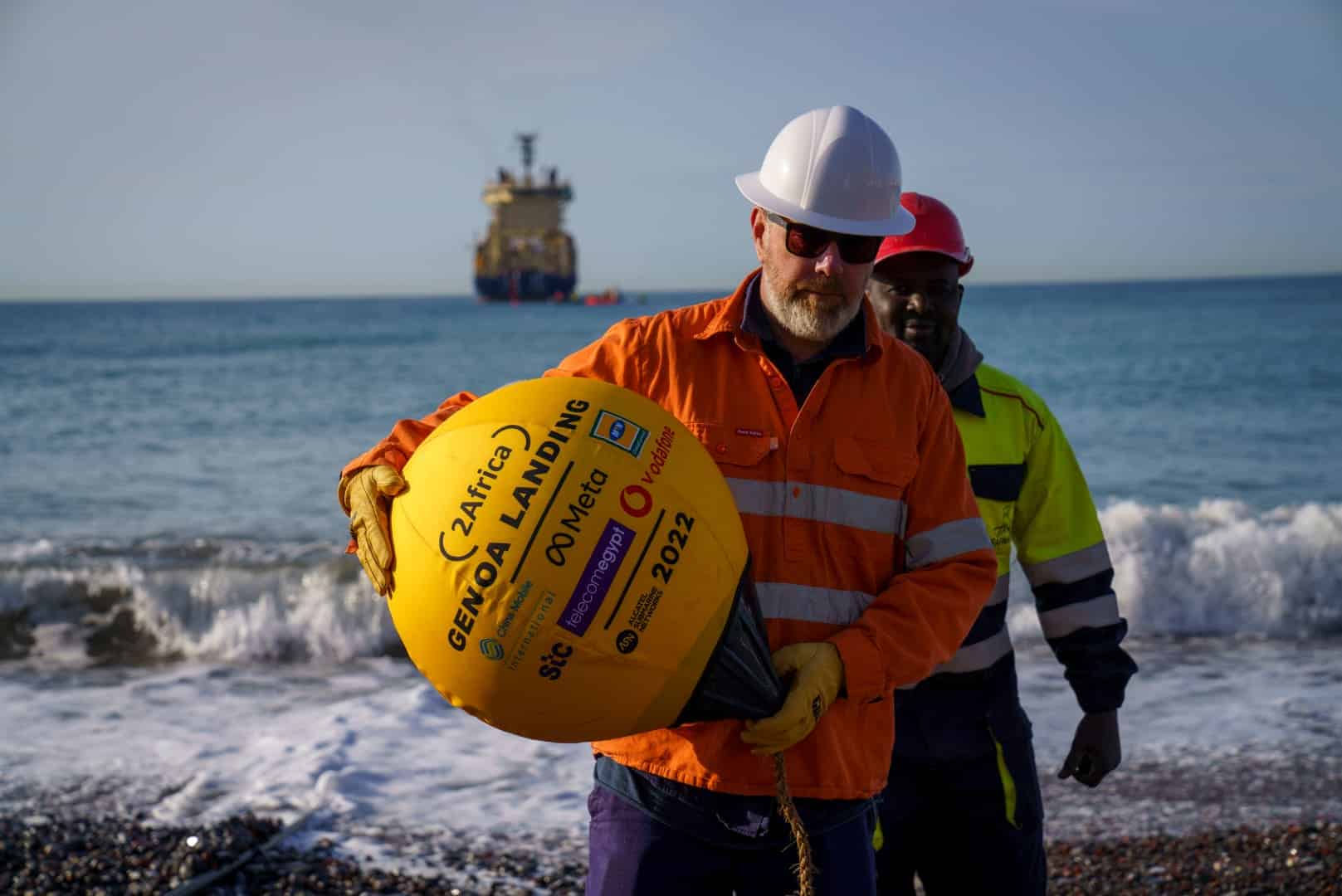The ambitious submarine cable 2Africa, one of the largest digital infrastructure projects in the world, has reached a new milestone with its recent landing in Duba, Saudi Arabia. This arrival represents a key advancement in the expansion of global connectivity, especially in Africa, the Middle East, and Asia. However, geopolitical challenges in the Red Sea have delayed critical segments of this project, impacting connectivity capacity on the east coast of Africa.

Delays in the Marseille-Kenya Segment and Capacity Crisis in East Africa
The deployment of the Marseille-Kenya and Marseille-Mumbai segments of the 2Africa cable has been delayed due to hostilities in the Red Sea, which has had a direct impact on East Africa’s connectivity.
This delay, combined with the capacity limitations of the Seacom and Eassy cables, has led to an unprecedented increase in bandwidth prices on the east coast of Africa, with 100G rates reaching between $40,000 and $60,000. Although the geopolitical situation has shown signs of recent stability, service providers have yet to adjust prices due to the scarcity of available capacity.
The Marseille-Egypt segment of 2Africa is already complete and operational, but uncertainty regarding the viability of continuing the connection through high-risk areas, such as Djibouti, Somalia, Kenya, and Oman, remains a key concern for the 2Africa consortium.
The Strategic Impact of Finalizing the Marseille-Kenya Segment
Completing the Marseille-Kenya segment would allow the east coast of Africa to redirect its traffic directly to Europe instead of relying solely on South Africa. Currently, all traffic from the East African coast must travel to Cape Town or Johannesburg, which overloads the Seacom and Eassy cables and contributes to the capacity crisis.
Activating this segment would bring significant benefits:
- Reduction of congestion on current cables, allowing for a more equitable distribution of data traffic.
- Increased resilience and redundancy in African connectivity infrastructure.
- Reduction of connectivity costs by providing new traffic routes to Europe.
However, the 2Africa consortium is likely to take a cautious and prudent approach before proceeding with deployment in sensitive areas.
2Africa: The Largest Submarine Cable Project in the World
With a total length of 45,000 kilometers, the 2Africa cable is the most extensive submarine telecommunications infrastructure ever deployed. Its goal is to connect 46 locations in 33 countries, providing high-speed connectivity to approximately 3 billion people in Africa, Europe, and Asia.
This project, led by a consortium of technology and telecommunications companies, aims to transform global connectivity by facilitating internet access in regions with limited infrastructure. The 2Africa network is expected to drive economic and social growth in emerging markets by optimizing access to education, health, and digital business services.
Conclusion: A Step Further Towards Global Connectivity
The landing of 2Africa in Duba, Saudi Arabia, marks another step in the development of this key infrastructure. However, the geopolitical, economic, and logistical challenges continue to affect the project’s execution in certain regions.
As the consortium evaluates the risks in the Red Sea and decides on the viability of the Marseille-Kenya segment, the demand for connectivity in East Africa continues to rise. The full activation of 2Africa will be crucial in alleviating the capacity crisis in the region and ensuring more equitable access to global connectivity.
via: 2Africa Cable

